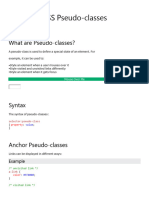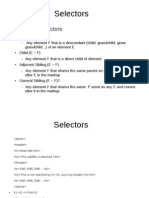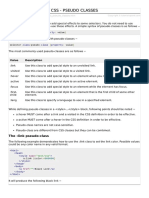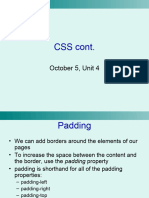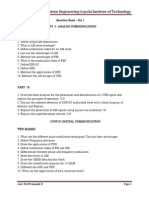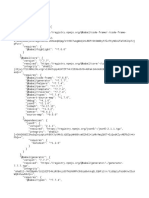0% found this document useful (0 votes)
23 views1 pageCSS Pseudo Selectors Quick Guide
This document provides a quick guide to CSS pseudo-selectors, categorizing them into pseudo-classes and pseudo-elements. It lists various pseudo-classes such as :hover, :active, and :nth-child, along with their descriptions and examples. Additionally, it covers pseudo-elements like ::before, ::after, and ::first-letter, detailing their usage and examples.
Uploaded by
aayushkush21Copyright
© © All Rights Reserved
We take content rights seriously. If you suspect this is your content, claim it here.
Available Formats
Download as PDF, TXT or read online on Scribd
0% found this document useful (0 votes)
23 views1 pageCSS Pseudo Selectors Quick Guide
This document provides a quick guide to CSS pseudo-selectors, categorizing them into pseudo-classes and pseudo-elements. It lists various pseudo-classes such as :hover, :active, and :nth-child, along with their descriptions and examples. Additionally, it covers pseudo-elements like ::before, ::after, and ::first-letter, detailing their usage and examples.
Uploaded by
aayushkush21Copyright
© © All Rights Reserved
We take content rights seriously. If you suspect this is your content, claim it here.
Available Formats
Download as PDF, TXT or read online on Scribd
/ 1









